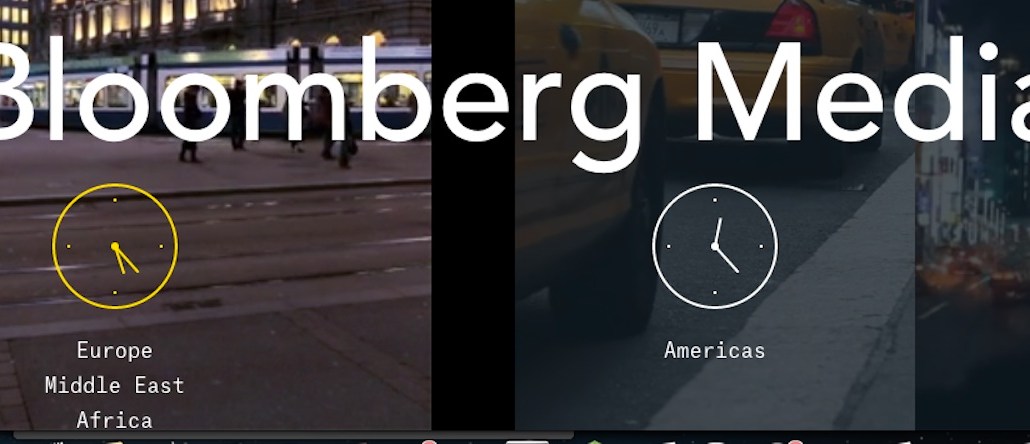
As publishers increasingly see their audience come in from social platforms, they naturally are looking for ways to capitalize on that growth.
Case in point is Bloomberg Media Group. Bloomberg.com’s social side door traffic has grown 90 percent over the past year, according to the company, no doubt helped by the fact that Bloomberg owns the Twitter handles @business, @luxury, @markets and @technology. According to SimilarWeb, 17.1 percent of Bloomberg’s desktop traffic comes from social sources (a figure that’s likely higher on mobile), led by Facebook, reddit and Twitter. The company has become the latest to introduce a product, called Social Connect 2.0, that lets marketers serve ads to those visitors when they come to the site from social channels.
“There are definitely marketers that love that highly social audience,” said Paul Caine, Bloomberg Media’s chief revenue and client partnerships officer. “Social Connect 2.0 is based on the understanding that each social platform has a unique type of consumer who is seeking content but often for different reasons. The goal of this product is to better understand those nuances and to help our partners market and tell the story more seamlessly via those channels.”
The increase in Bloomberg’s social audience mirrors a shift in news consumption at large. According to the Pew Research Center, more people are getting their news via Facebook and Twitter. One in 10 people get their news on Twitter, while on Facebook, it’s four in 10.
It’s a trend publishers can’t ignore if they want to reach new audiences, especially younger readers. Half (50 percent) of Facebook users aged 18-34 said in a survey that they consider the social network to be an important source of news, compared to 34 percent of Facebook users aged 35 and up.
Social targeting holds interest from advertisers. To Brian Ko, managing partner for digital at MEC, who said he has used Social Connect for clients, such tools can show that the publisher has a strong social audience. The hypothesis is that if readers clicked through to read an article, they may be more likely to share it, and the ad along with it.
The catch is that people who come to the news from the social Web spend less time on the site, visit fewer pages and return less often, earlier Pew research has found. And the traditional view holds that those people are less valuable to advertisers who are looking beyond traffic stats for evidence that audiences are truly engaged. Meanwhile, advertisers who want to do demographic targeting are already served by programmatic channels.
Ad position: web_incontent_pos1
Buyers also say it needs a strong data overlay that publishers don’t always provide. (Caine said Bloomberg shares data based on what the advertiser is interested in, but he declined to go into specifics.)
But clicking alone doesn’t mean the ad was effective, and publishers typically don’t share what readers did before and after they clicked.
“We should have that additional layer of data — where are they coming from, what are they reading prior to coming to the site. And the bounce rate is important,” Ko said. “The downside is, we don’t get that information.”
Jill Sherman, svp of social strategy and social practice lead at Digitas LBi, said, generally speaking, a product like Social Connect could be valuable to advertisers if the publisher had data to suggest that the visitors coming from social media had certain attributes, such as being heavy sharers of content or fans of the advertiser’s brand. Simply knowing users are coming in from Facebook doesn’t necessarily qualify them as highly engaged or valuable individuals to a brand, she said.
“The ability for a publisher to layer in a level of behavioral or interest data they know through the social graph — that’s what’s valuable to the advertiser,” she said. “If it’s done ethically and with user privacy in mind, it would be an easy sell to advertisers.”
More in Media

NewFronts Briefing: Samsung, Condé Nast, Roku focus presentations on new ad formats and category-specific inventory
Day two of IAB’s NewFronts featured presentations from Samsung, Condé Nast and Roku, highlighting new partnerships, ad formats and inventory, as well as new AI capabilities.

The Athletic to raise ad prices as it paces to hit 3 million newsletter subscribers
The New York Times’ sports site The Athletic is about to hit 3 million total newsletter subscribers. It plans to raise ad prices as as a result of this nearly 20% year over year increase.

NewFronts Briefing: Google, Vizio and news publishers pitch marketers with new ad offerings and range of content categories
Day one of the 2024 IAB NewFronts featured presentations from Google and Vizio, as well as a spotlight on news publishers.
Ad position: web_bfu


